Electricity Markets
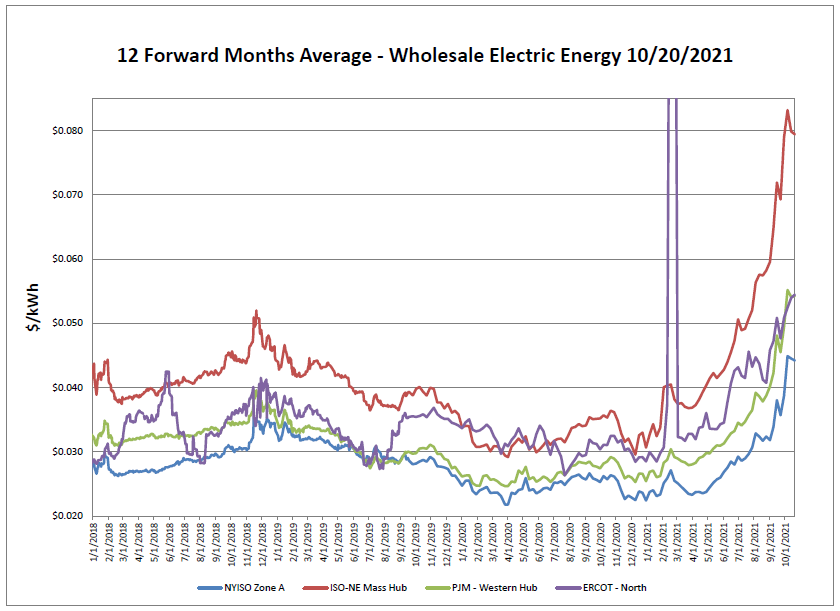
Forward electric saw another small dip week over week across most markets as the underlying cost of gas experienced some relief from its upward run.
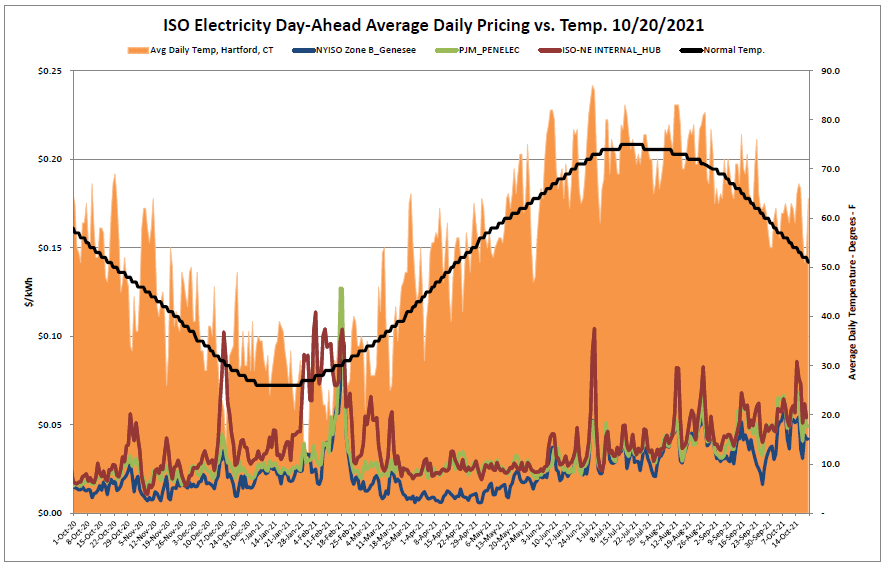
Temperatures remained steadily above average over the last week. Electric pricing experienced some volatility in response to the unseasonably warm weather as well as the elevated underlying cost of natural gas.
Natural Gas Markets
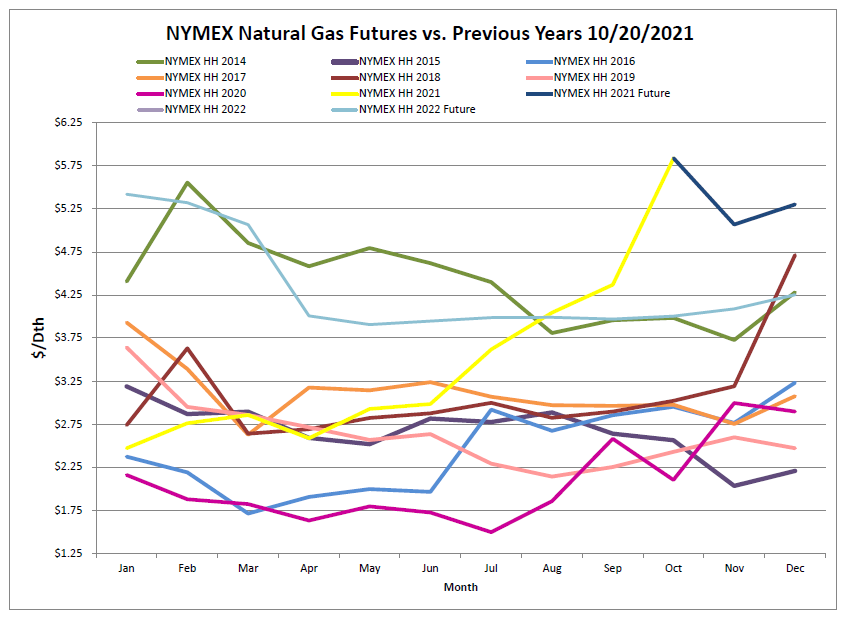
Forward gas dropped substantially in the near-term and outward year week over week. Trading costs for 2021 now mirror a similar pattern of years’ prior with an elevated October settle, a November dip, and a December increase.
Futures as of 10/20/2021 versus previous week:
| Nov-21 | $5.070 | -$0.812 |
| Dec-21 | $5.302 | -$0.736 |
| Jan-22 | $5.421 | -$0.708 |
| Feb-22 | $5.322 | -$0.691 |
| Mar-22 | $5.068 | -$0.605 |
| Apr-22 | $4.008 | -$0.243 |
Natural Gas Inventory
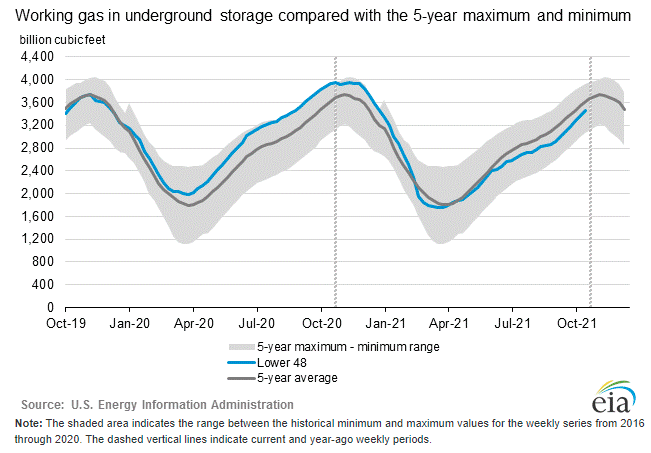
As of Friday, October 15, 2021 working gas in storage was 3,461 Bcf. According to EIA estimates this represents a net increase of 92 Bcf from the previous week.
The Baker Hughes exploration gas count rose by one from the previous week for a total of 99 rigs. This is 26 more rigs than the 73 in operation at this time one year ago.
Weather Update
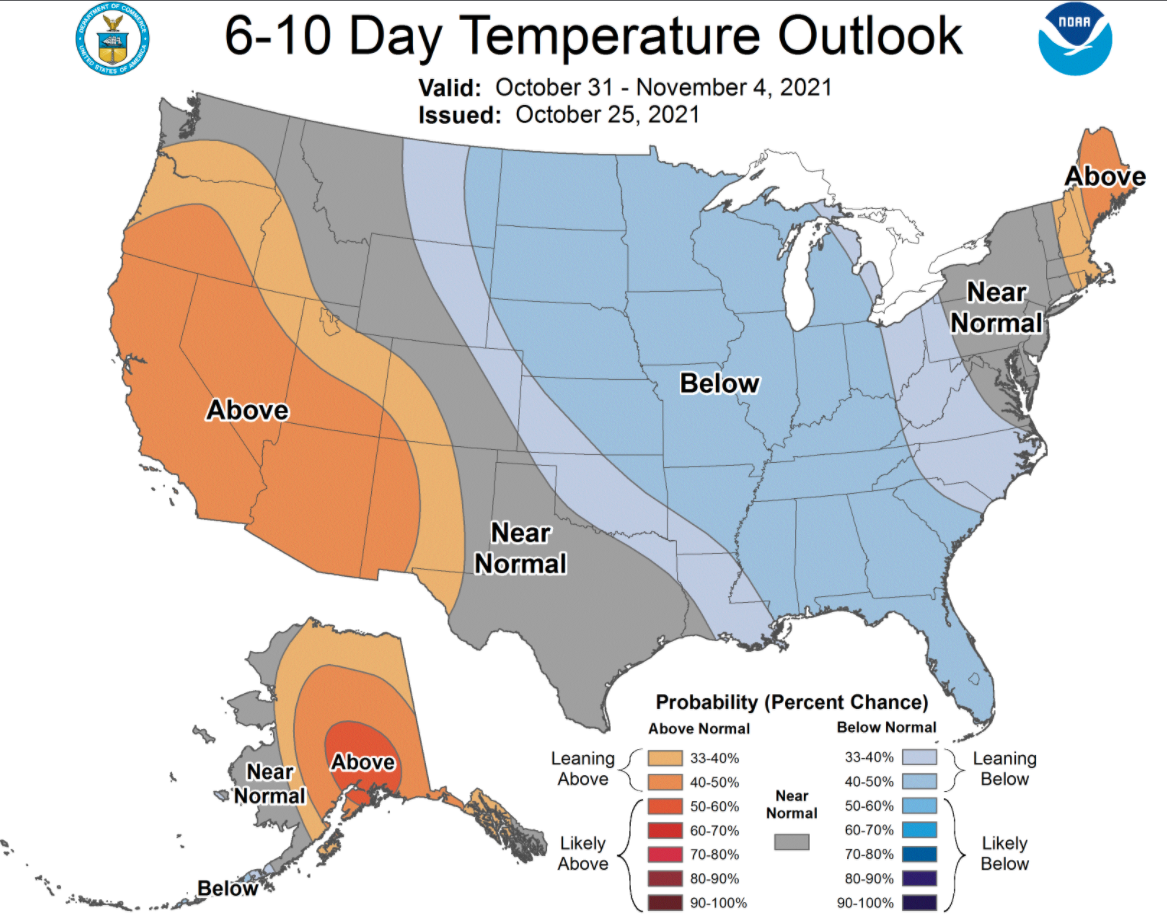
Warmer than normal temperatures are expected over the west coast with below normal temperatures expected over much of the Central US.
National Weather Service Updates (NOAA)
Hurricane Watch: Click here to view the National Hurricane Center site.
Equatorial Pacific Outlook:
Click here to view La Nina and El Nino status.
Energy News
U.S. Winter Outlook: Drier, warmer South, wetter North with return of La Nina Above-average temperatures are favored across the South and most of the eastern U.S. as La Nina climate conditions have emerged for the second winter in a row according to NOAA’s Climate Prediction Center — a division of the National Weather Service. In NOAA’s 2021 Winter Outlook — which extends from December 2021 through February 2022 — wetter-than-average conditions are anticipated across portions of the Northern U.S., primarily in the Pacific Northwest, northern Rockies, Great Lakes, Ohio Valley and western Alaska. If you would like to receive the Energy Market Update to your inbox weekly, please click here to submit your name and email address. Disclaimer: This information is provided for the use of our customers and potential customers. Power Management Company assumes no responsibility or liability for the accuracy or completeness of pricing or information in this document. Historical data was obtained from sources that we believe to be reliable, but we do not guarantee its accuracy or completeness. It is not intended to provide advice or recommendation. Views are subject to change without notice.

